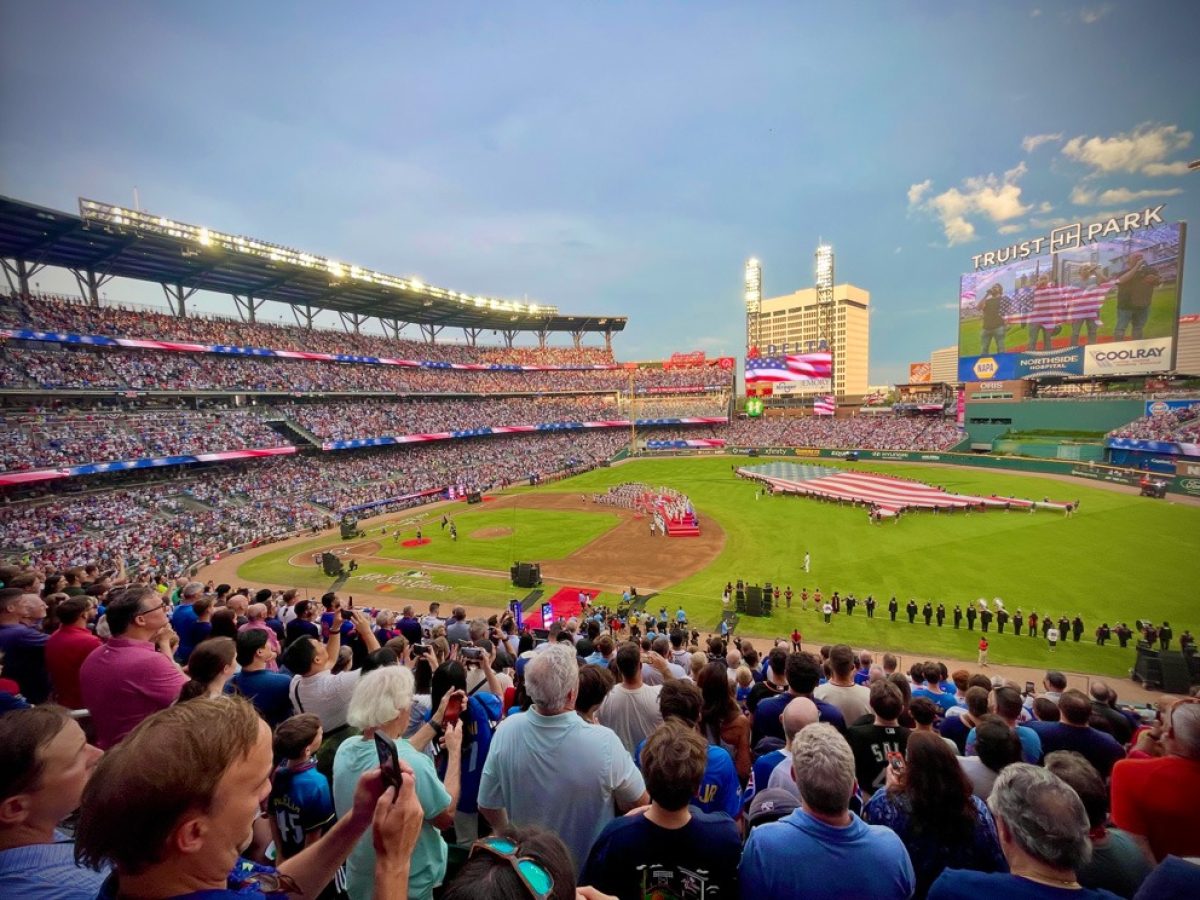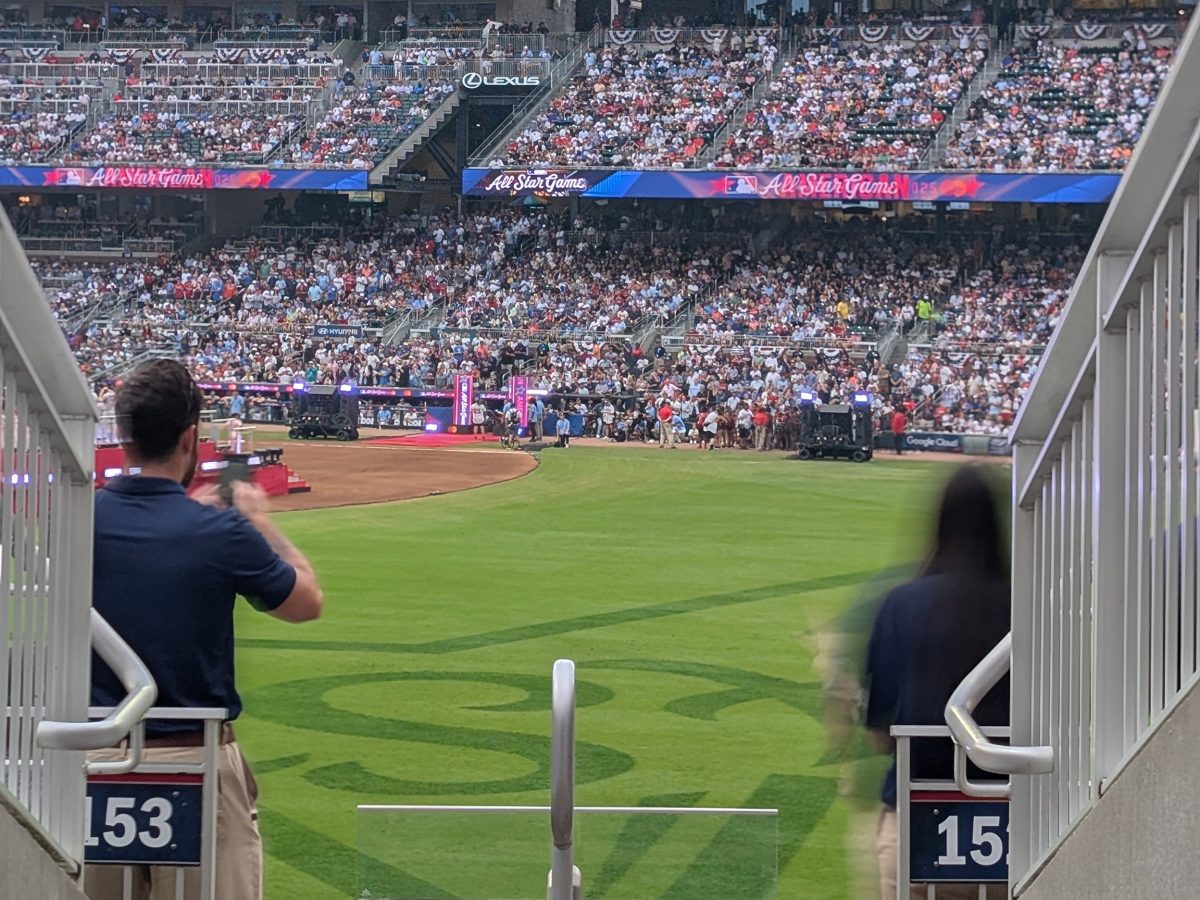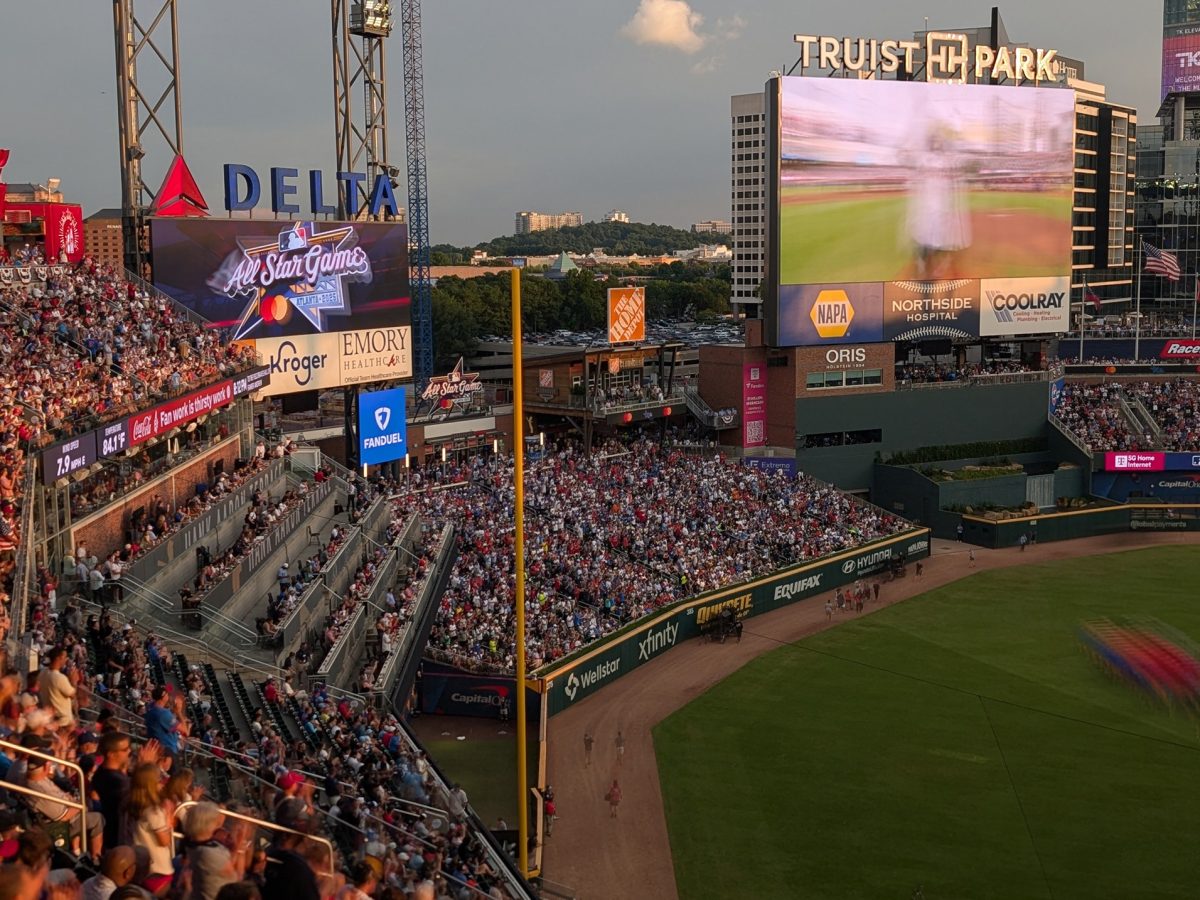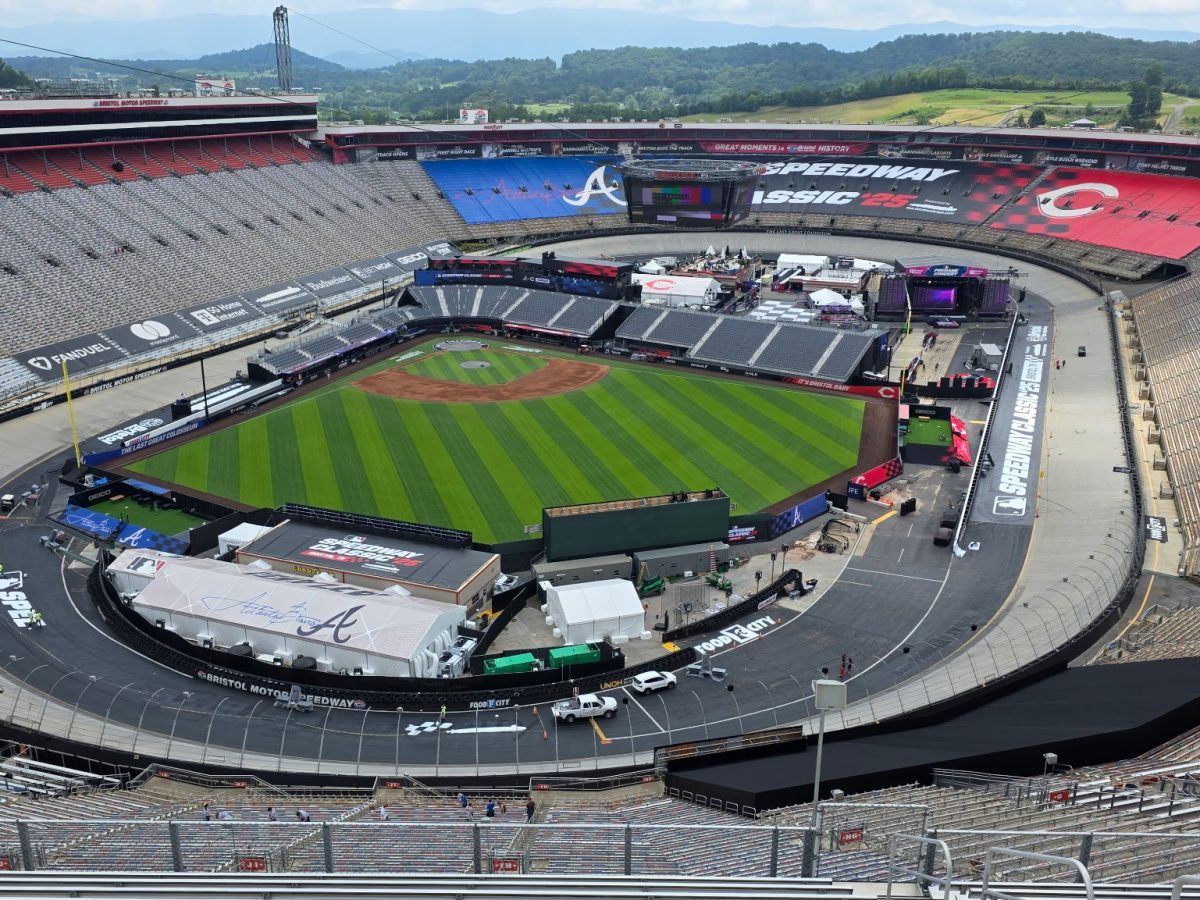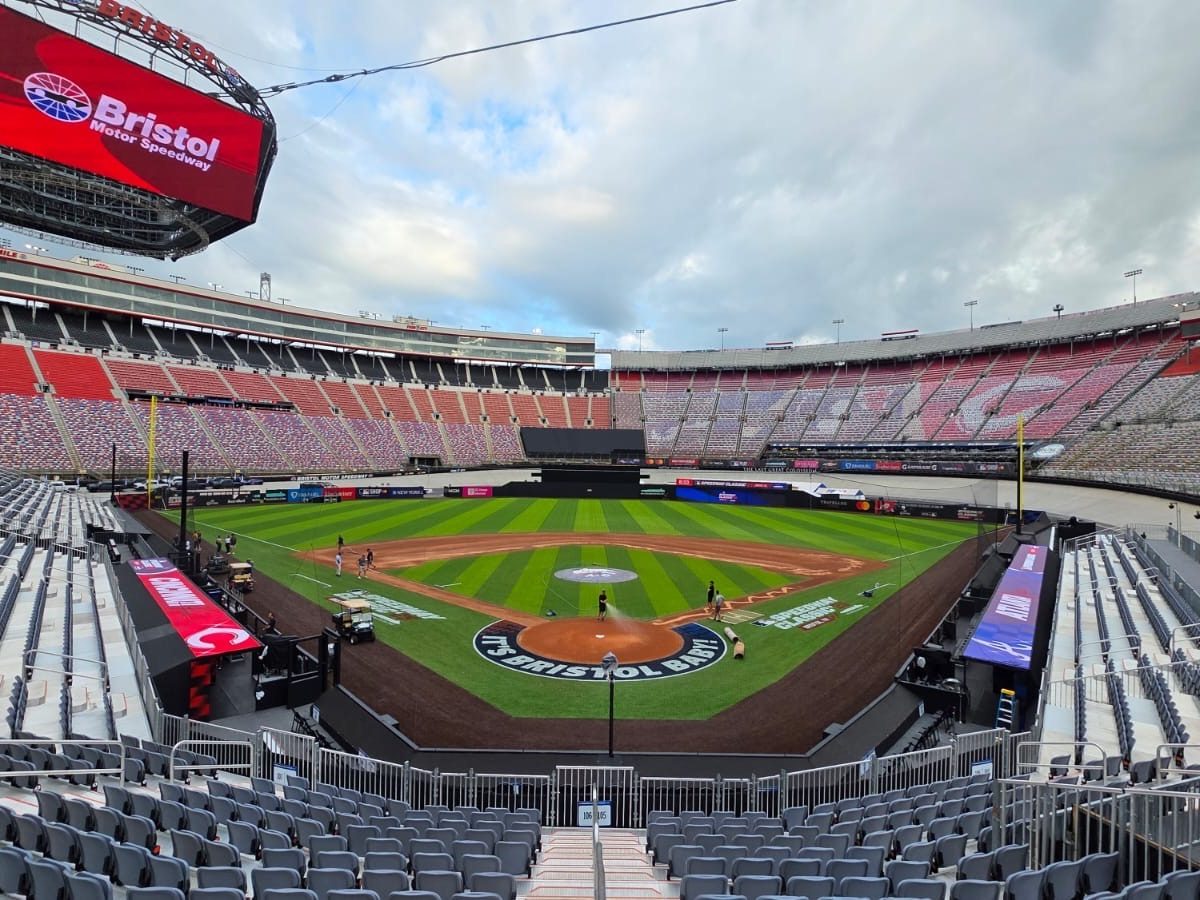August 8, 2025
Pastime Reimagined: MLB Puts a Twist on Tradition
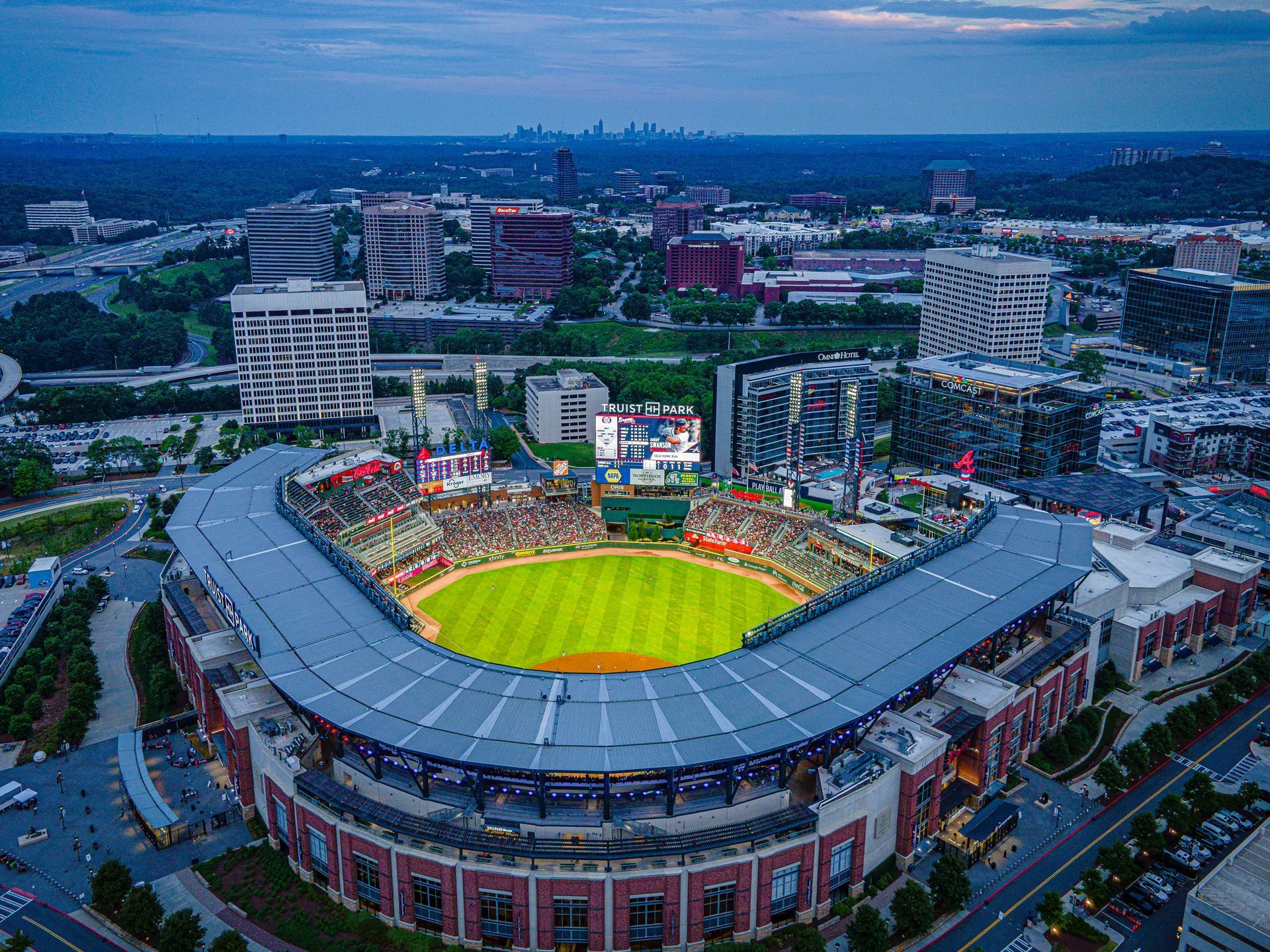
From the cinematic charm of the Field of Dreams Game in Dyersville, Iowa, to the powerful symbolism of Fort Bragg, and now the thrilling spectacle of the Speedway Classic in Bristol, Tenn., MLB is proving that innovation and tradition aren’t mutually exclusive—they’re teammates.
At the heart of these transformations is Populous, bringing creativity and precision to events that require equal parts design ingenuity and logistical expertise. Two standout examples—2025’s All-Star Week in Atlanta, Ga., and the record-breaking Speedway Classic—reveal how we continue to help MLB connect with new audiences while honoring the soul of the game.
Reimagining the Crown Jewel: All-Star Week in Atlanta
For most fans, All-Star Week is four days of action-packed events—the Home Run Derby, high-energy fan zones, and the marquee matchup between the American and National Leagues. For Populous event manager Sam Sugarman and his team, it’s the result of nearly a year of planning, culminating in a live experience for more than 100,000 attendees.
Sugarman arrived in Atlanta two weeks before the July 15 All-Star Game, but the real planning had started more than a year earlier. Despite Populous’ long-standing partnership with MLB (dating back to 1999), no two years—or host cities—are alike. “We have a long history of expertise, but every All-Star Game presents new opportunities to get creative,” says Sugarman.
One challenge this year? Navigating where to house the expanded broadcast compounds at Truist Park. With global broadcasters descending on the city, the Populous team had to strategically site multiple broadcast compounds—maximizing camera angles and convenience while preserving the ballpark’s visual appeal.
Elsewhere, spaces were reimagined with purpose. The Hank Aaron Terrace—typically a fan-facing indoor-outdoor hospitality area—was converted into an auxiliary press room, accommodating more than 400 journalists (nearly five times what a usual MLB press box can hold).
"The Speedway Classic was one of our biggest events yet, and a huge part of its success was our partnership with Populous. Their incredible design of this unique temporary field truly made baseball come alive in the Speedway. We're so grateful for their collaboration and look forward to many more amazing projects together."
“The site’s topography added another layer of complexity,” explains Todd Barnes, Populous Senior Principal and long-time MLB event lead for Populous. “We had to be intentional with everything from stage placement to field access.”
As Truist Park transformed—repurposing numerous zones for new uses and welcoming thousands of first-time visitors—event wayfinding emerged as a vital component of the guest experience. Populous’ Mike Lorenzo took the lead, delivering strategic signage solutions that made navigation intuitive and seamless. Alongside his team, Lorenzo designed, coordinated, and implemented comprehensive wayfinding systems that not only directed attendees with clarity but also amplified the event’s unique branding and atmosphere.
Ultimately, the true test of a successful All-Star Game isn’t just the fanfare—it’s how quickly the ballpark returns to normal. In Atlanta’s case, the Braves were back in action just three days later.
“We understand what they need to make it a functional and successful event but also ensure ballpark operations continue uninterrupted,” Sugarman notes.
Bringing the Game to the Track: Speedway Classic at Bristol
If you had asked most people to envision a baseball game at Bristol Motor Speedway—a half-mile racetrack known for its roaring engines, towering video board, and 140,000-seat capacity—you’d likely get a raised eyebrow. But for Barnes, Michael Kinard, event architect, and Taylor Brewer, event designer, it was the ultimate design challenge—and an opportunity too good to pass up.
“The space is huge, but it’s not a blank slate,” Kinard recalls. “Between the concrete pit walls, the unique sightlines, and the need to build dugouts and clubhouses from scratch—it was a complex puzzle.”
At the heart of that puzzle: Where to place the field. The final layout positioned home plate at the track’s start/finish line, with first base extending toward Turn One and center field aimed at Turn Two. This strategic orientation shielded players from the sun and kept Bristol’s crown jewel—Colossus, the massive four-sided video board—safely in foul territory.
With the plan in place, a fleet of partners sprang into action:
- 124,000 square feet of AstroTurf, hauled in by more than 15 tractor trailers
- 18,000 tons of gravel to elevate and level the playing field
- Over 1,000 feet of concrete pit wall removed—and later replaced
The Speedway Classic wasn’t just a novelty—it was a statement. MLB set an ambitious target of 85,000 attendees. By the end of the weekend, over 91,000 fans had filled the “Last Great Colosseum,” setting a new record.
When rain delays unexpectedly extended the single-day event into a two-day marathon, the design held strong. From fan movement to field durability, the Populous plan flexed to meet the moment.
“The steep, vertical sightlines of the Speedway made for unforgettable views,” Kinard says. “There’s nothing else like it.”
A Vision for the Future
For Populous, these events go far beyond logistics—they’re a chance to tell a story through space and experience. Whether transforming an MLB ballpark for a once-a-year celebration or turning a NASCAR shrine into a baseball cathedral, the work helps MLB redefine what’s possible.
From tradition to transformation, one thing is clear: Baseball is still finding new ways to surprise us.
Lorem ipsum dolor sit amet consectetur, adipisicing elit. Non facere corporis et expedita sit nam amet aut necessitatibus at dolore enim quis impedit eius libero, harum tempore laboriosam dolor cumque.
Lorem, ipsum dolor sit amet consectetur adipisicing elit. Illo temporibus vero veritatis eveniet, placeat dolorem sunt at provident tenetur omnis, dicta exercitationem. Expedita quod aspernatur molestias eum? Totam, incidunt quos.
